Common Non-Stick Mistakes
So, you might be taking care of your non-stick pan to the best of your knowledge. But, is your knowledge up to date? Are you sure what you are doing is right?
Let’s find out common mistakes (accidental, of course) that might be ruining your non-stick pans:
1. Using cooking spray : Yes. The store-bought cooking spray is usually not compatible with the cooking surface of non-stick cookware. Instead, use Meyer Oil Mister to fill the bottle with vegetable oil at home.
2. Pre-heating cookware : You have been often told to preheat the cookware before cooking. But not non-stick cookware.
3. Using high heat : High heat often damages the coating and also can release harmful toxins.
4. Washing improperly : The wrong kind of sponges (metal), washing it too harshly or putting the non-stick cookware in a dishwasher can over time harm the coating.
Some of the Best Non-Stick Products Available :
1. Meyer Anzen Ceramic Coated Cookware 26cm Frypan
The best toxin-free frypan in India with enchanting appearing and excellent features! This comes from the much-loved and highly trusted eco-friendly cookware range, Anzen, that offers a wide range of ceramic cookware with no harmful coating. The high-quality frypan boasts of Silicone + Oxygen’ Ceramic coating with an Aluminum body that gives its premium quality and unmatchable strength. Among many other things, this green frypan features high-heat endurance that is next to only cast iron cookware. Hence, you can use this to cook delicious Indian foods- with golden, crunchy textures- without any fear.
When you want to be 100% certain about safety, then trust this product by Anzen, a ceramic cookware range. Impeccable performance along with high heat tolerance guaranteed!

2. Meyer Merlot Non-Stick Kadai/Wok With Lid, 28cm
When you want to simplify your cooking and beautify your kitchen, trust this high quality non stick cookware range. The perfect amalgamation of seamless design and aesthetic appearance, this non-stick Kadai is a must-have kitchen tool. It will look great in your cabinet, will cook perfectly in any cooktop and will shine at your table too. Yes, this is the perfect stovetop-to-oven-to table and also to dishwasher kind-of cookware. Its ridged and dimpled ‘Square-Dot’ pattern promotes smooth food release and gives resistance against utensil abrasion, ensuring smooth cooking and lasting durability.

3. Meyer Accent Series Hard Anodized Nonstick Frying Pan/Skillet, 20cm, Matte Black
When you want best-in-class quality, this is what you should choose. Every detail has been designed to add comfort to cooking experience, from wide cooking surface, comfortable handle and study built- this is the best frypan/skillet you could ever have. With three layers of impeccable coating and a special bonding process, this non-stick skillet has been designed to last longer. The frypan has exceptional heating ability, which means, this is just perfect for even cooking. It is compatible with all cooktops, therefore, you can sear your food here till you get a golden crust and then toss it in the oven for a hassle-free finish.

4. Circulon Origins 24cm Non-Stick + Hard Anodized Kadai/Wok With Lid
The name is synonymous with premium quality. Get the best non-stick kadai in India with lifetime warranty at an affordable rate. This is the best-value kadai that will help you cook your lunch and dinner without any fuss at all. Its exceptional design and extraordinary appearance make this a must-have kadai for any Indian kitchen. The wok features heavy gauge hard anodised construction that ensures fast, even heating and leaves no scope for hot spot. It is perfect for searing, browning and cooking all kinds of food just the way you want. Its metal utensil safe interior, with unique hi-low grooves, features the TOTAL Non-stick system for effortlessly incredible cooking results.

How to save non-stick cookware?
Now that you have realized the accidental goofes that you might have been committing with your non-stick cookware, it’s time to come clean! Here are some basics guidelines and tips that will extend the shelf life of your non-stick cookware:
1. Use only utensils that are made and meant for non-stick cookware
Avoid using utensils and accessories (ladles, spatula, turner or whisk) with rough or sharp edges that can scratch the non-stick surface. You are recommended to use plastic, silicone or wooden accessories that will not mar the coating. Here are some safe accessories that you can use to stir, flip, turn or serve your food
2. A little oil can make a huge difference
Even though non-stick cookware are fully capable of helping you enjoy zero oil cooking, a little bit of oil will act like seasoning and increase its lifespan.
To ensure that you use the slightest amount of oil, you can use Meyer Oil Sprayer.
3. Use only low to moderate heat
Most coatings can’t tolerate the wrath of high heat, in fact, prolonged periods of high heat will start hampering the quality of the coating- it may discolor or lose its non-sticky quality. If heated beyond 500-degree F, the coating may start decomposing and emit fumes. So, only use low to moderate heat while cooking in your non-stick cookware.
4. Don’t store food in your non-stick pan
Your pan is for cooking, not for storing food. As soon as the food is cooked, transfer it to a storage vessel because some foods are acidic and can damage the coating when left in the cookware. Here are some premium containers that you can use to store your food
5. Avoid drastic change is temperature
Drastic changes in temperature can trigger warping that will damage the nonstick coating and affect cooking performance. Thus, always allow your nonstick cookware or bakeware to cool completely before exposing it to water.
6. Gently hand wash your non-stick cookware
Though most of the non-stick cookware are labeled safe for dishwashing, you must note that dishwashing detergent can be harsh for the coating. Hence, it is always recommended to manually wash your nonstick cookware in warm soapy water with a plastic scrub, sponge, or dishcloth. Avoid using scrubbers that have built-in harsh cleansers or detergents
7. Store your non-stick cookware with care
Proper storage is also an integral part of the overall maintenance of your non-stick cookware or bakeware. When nesting nonstick pans, insert a paper napkin between them to ensure that the bottom of one pan doesn’t scratch the coating of the other.
FAQs
1. Food is sticking to my non-stick pan
Meyer prides itself over using the world’s best performing non-stick coatings. Our pans promise non-stick performance for the duration of their warranty period. However, if food is sticking to your non-stick pan there may be a few reasons:
The non-stick coating of the pan has gone bad – There are multiple reasons due to which the coating could have gone bad. It can either be a manufacturing defect or it could be abuse to the pan. In the case that it is a manufacturing defect, we shall replace the pan for you but in case it is an abuse to the pan that will not be covered under warranty. The pan isn’t properly cleaned & has leftover gunk on it – Sometimes when we’re cooking with oily foods on a non-stick pan on high heat, the excessive oil tends to get deposited over as gunk on the surface of the pan. Cleaning all such gunk before next use os very important to maintain the non-stick performance of the pan. The pan isn’t getting sufficient temperature – Food may stick to a non-stick pan in the case that you are cooking something right out of the refrigerator onto a cold non-stick pan. Non-Stick pans work best between low & medium flame.
2. My non-stick pan is scratched
Scratches may occur on the pan depending on how you store/clean your pans & also what tools you use on your pans while cooking. However, scratches are not covered under warranty! No scratches however will affect the non-stick performance of the pan.
To avoid scratches in the future, we highly recommend the use of silicone/nylon tools on your non-stick pans. If in any case, the scratches are causing the pan’s performance to deteriorate, we shall replace it for you as long as the scratches don’t indicate abuse to the pan which includes using harsh chemicals, metal wools or scrubbing pads while cleaning & using sharp metal/wooden tools on the non-stick surface.
Simple yet effective measures like using warm soapy water to clean, using silicone tools while cooking and storing the cookware separately, or using pan separators while nesting the cookware can make your non-stick pans last longer. We hope this helps!
3. What tools can I use on my non-stick pan?
We highly recommend the use of silicone tools on your non-stick cookware as they don’t scratch the non-stick surface & are completely inert & don’t impart any chemicals into your food. We hope this helps!
4. My non-stick coating is blistered/chipped
The biggest problem that happens with non-stick is that of blistering or peeling. This happens when the food in non-stick cookware is prepared over high heat. These blisters can reduce the cooking and non-stick performance of your cookware. To avoid blisters, it is recommended that food always be prepared with a low-to-medium flame. Hope this helps!
5. What are the cleaning tools allowed? / How do I clean my non-stick pans?
The only way you should clean your non-stick pan is with liquid soap & sponge. We highly recommend not using any scrubbing pads on your non-stick as they generally have metal shards in them which can ruin your non-stick coating & negate the warranty of the pan. Simple yet effective ways like using warm soapy water to clean, storing the cookware separately, or using pan separators while nesting the cookware can make your non-stick pans last longer. We hope this helps!
6. My non-stick coating got lighter / faded / got yellowish over time
There are various factors that can cause the non-stick coating to dull or lose its colour over time. Major among them is the constant scratching or rubbing of the non-stick surfaces with metal tools. Apart from that, left-over food stored in a non-stick pan, or residue left behind due to improper cleaning, particularly of oil or acidic food. To ensure that the coating retains its shine and colour you should avoid metal utensils, properly clean your cookware and avoid storing food in the cookware. We hope this helps!
7. Is this non-stick safe? Is it okay if I accidentally consume some?
Meyer uses non-stick coatings developed by Chemours, USA and Whitford, USA. All our non-stick coatings are 100% Safe for You & Safe for Your Family. These coatings have been approved by the USA FDA (Food & Drug Administration) & also by the European FSA (Food Safety Authority) to be completely toxin-free and thus safe for use with food.
The authorities have also confirmed that our non-stick coatings pose no health threat to humans even if consumed on purpose or by accident. And if someone does consume them, it will pass through their system causing them no harm as it is totally inert.
We hope this clears your doubts. And we want to reassure you that everything we sell is 100% Safe for You & Safe for Your Family. Feel free to reach back should you have any more queries.
8. Does this have Teflon?
This is a question we get quite often & we’re happy to clear your doubts. Teflon was a brand of Non-Stick rather than a chemical found in Non-Stick coatings.
Meyer uses non-stick coatings developed by Chemours, USA and Whitford, USA. All our non-stick coatings are 100% Safe for You & Safe for Your Family. These coatings have been approved by the USA FDA (Food & Drug Administration) & also by the European FSA (Food Safety Authority) to be completely toxin-free and thus safe for use with food. We hope this helps!
9. Can I cook in this pan without oil?
Most non-stick pans require zero too little oil while cooking but for the best results and achieving complete food release, it is always recommended that you use a dab of oil and spread it evenly on the non-stick cooking surface before you start cooking. We hope this helps!
10. How do I store/stack my non-stick pans?
Non-stick pans get damaged due to improper storage, therefore it is very important to store them carefully in order to prolong their life. Storing the cookware separately, or using pan separators while nesting the cookware can make your non-stick pans last longer. We hope this helps!
Tell us if you have any other tips that use to make your nonstick cookware last longer and we will happily add them here!
Explore Meyer Non Stick Range

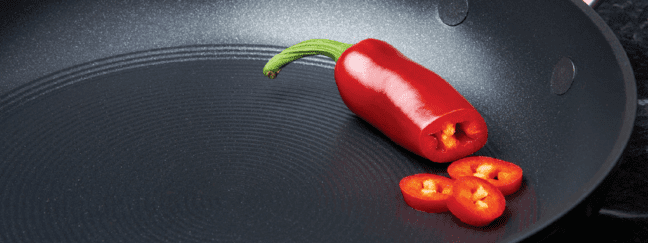
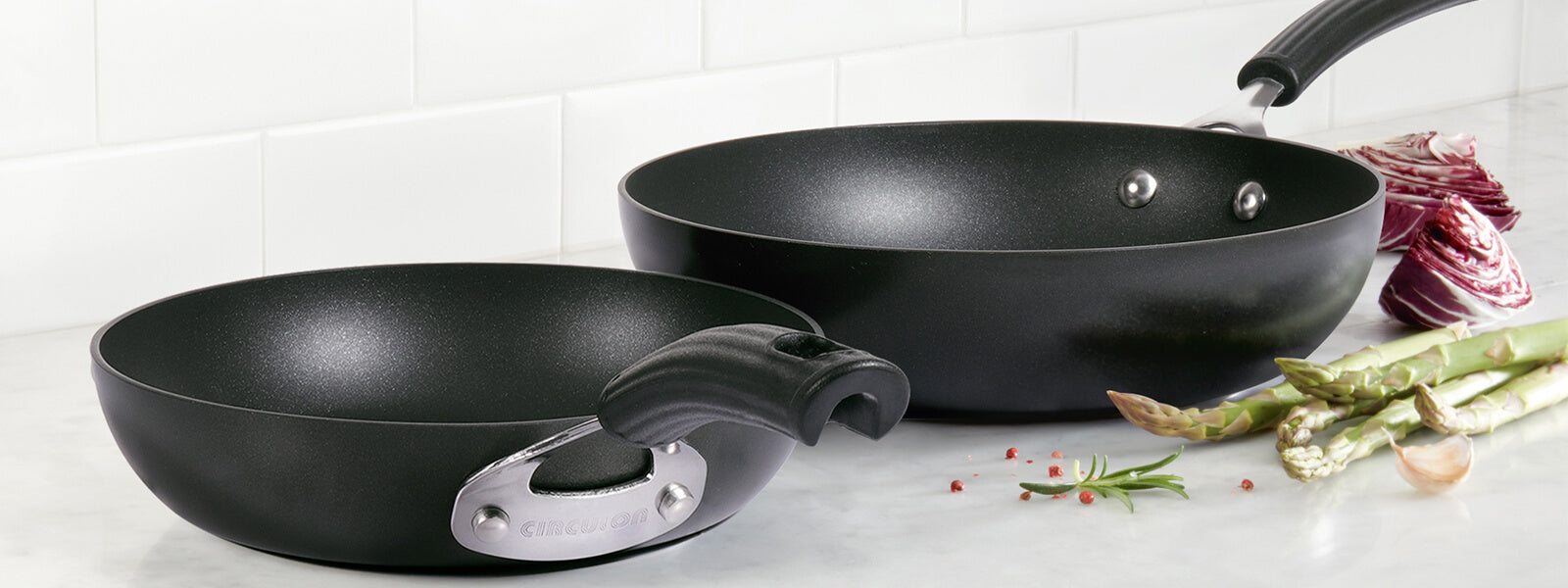
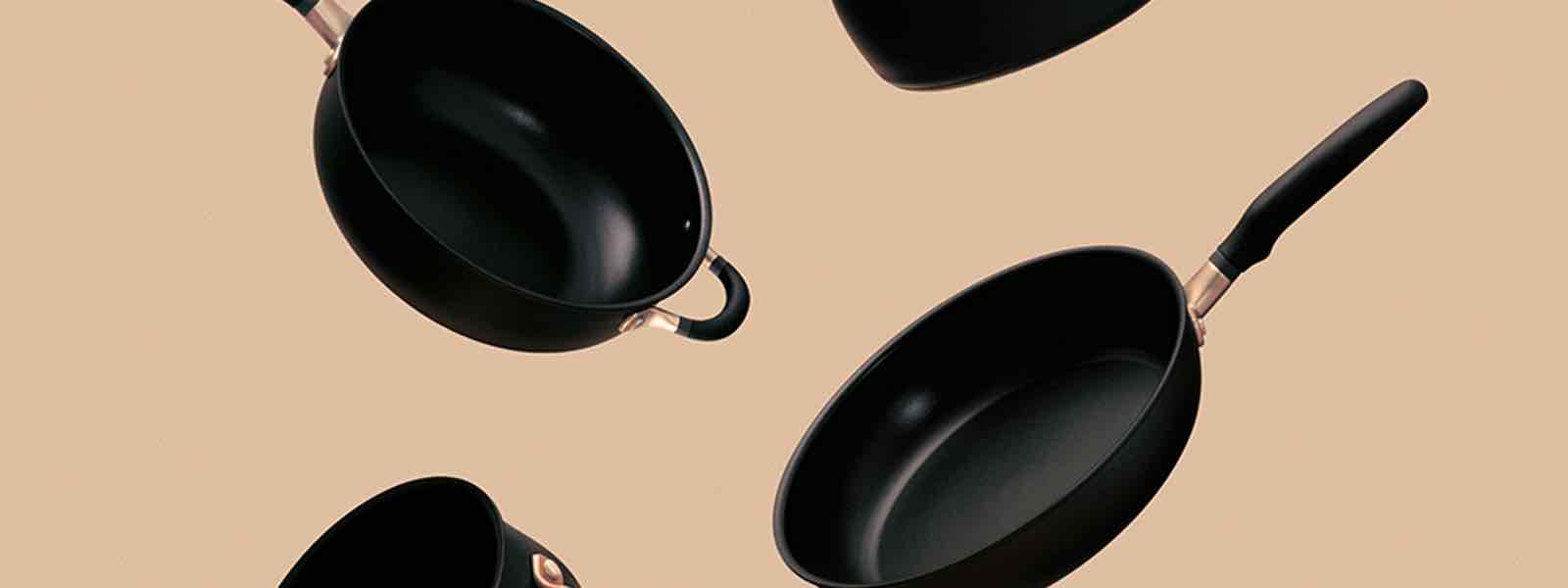
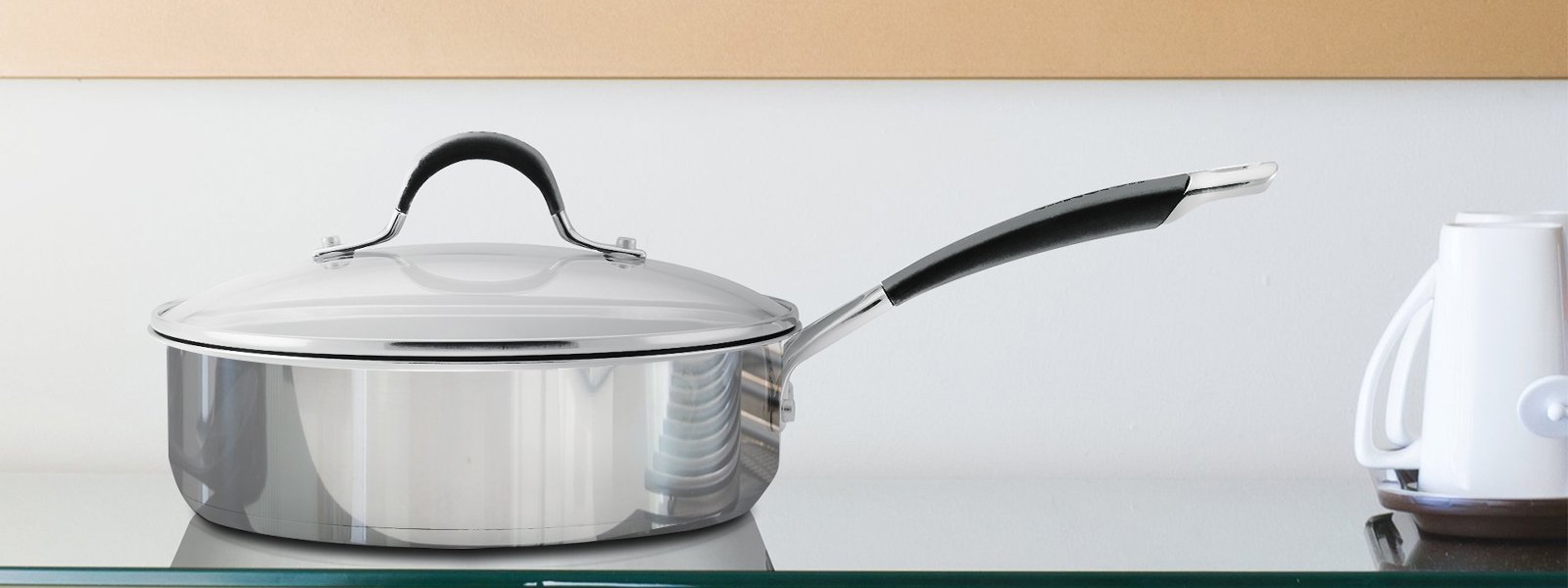
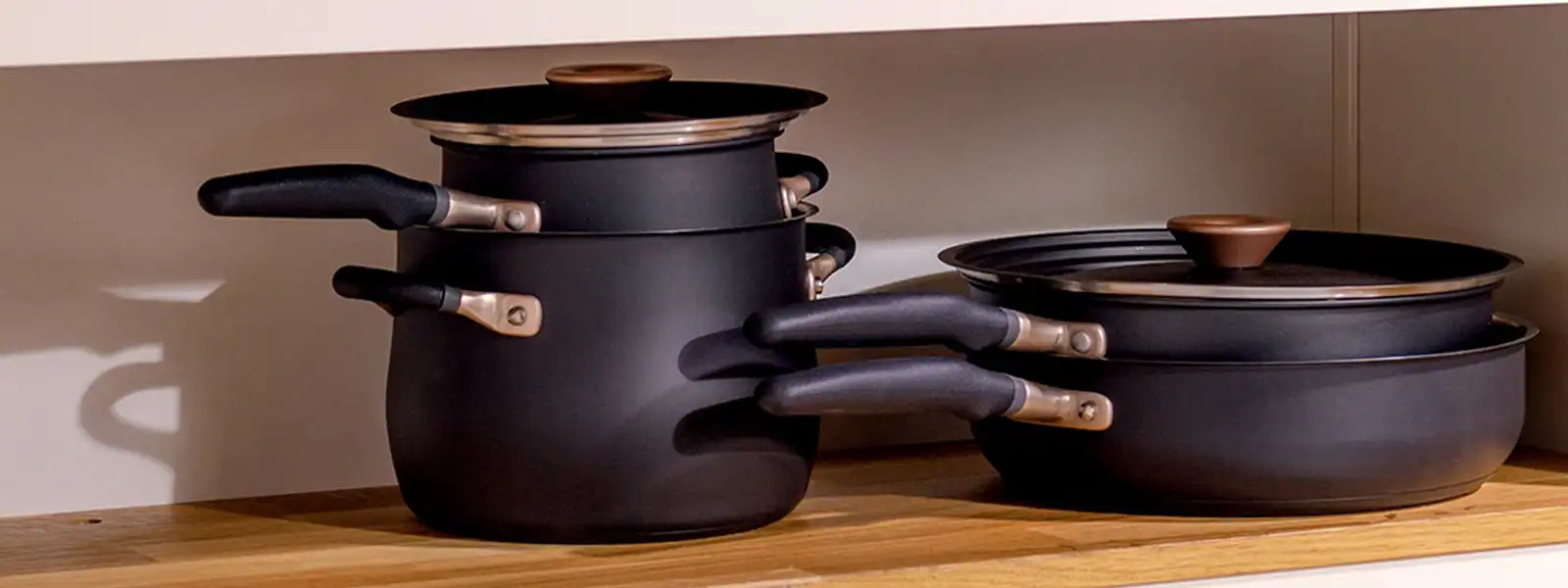
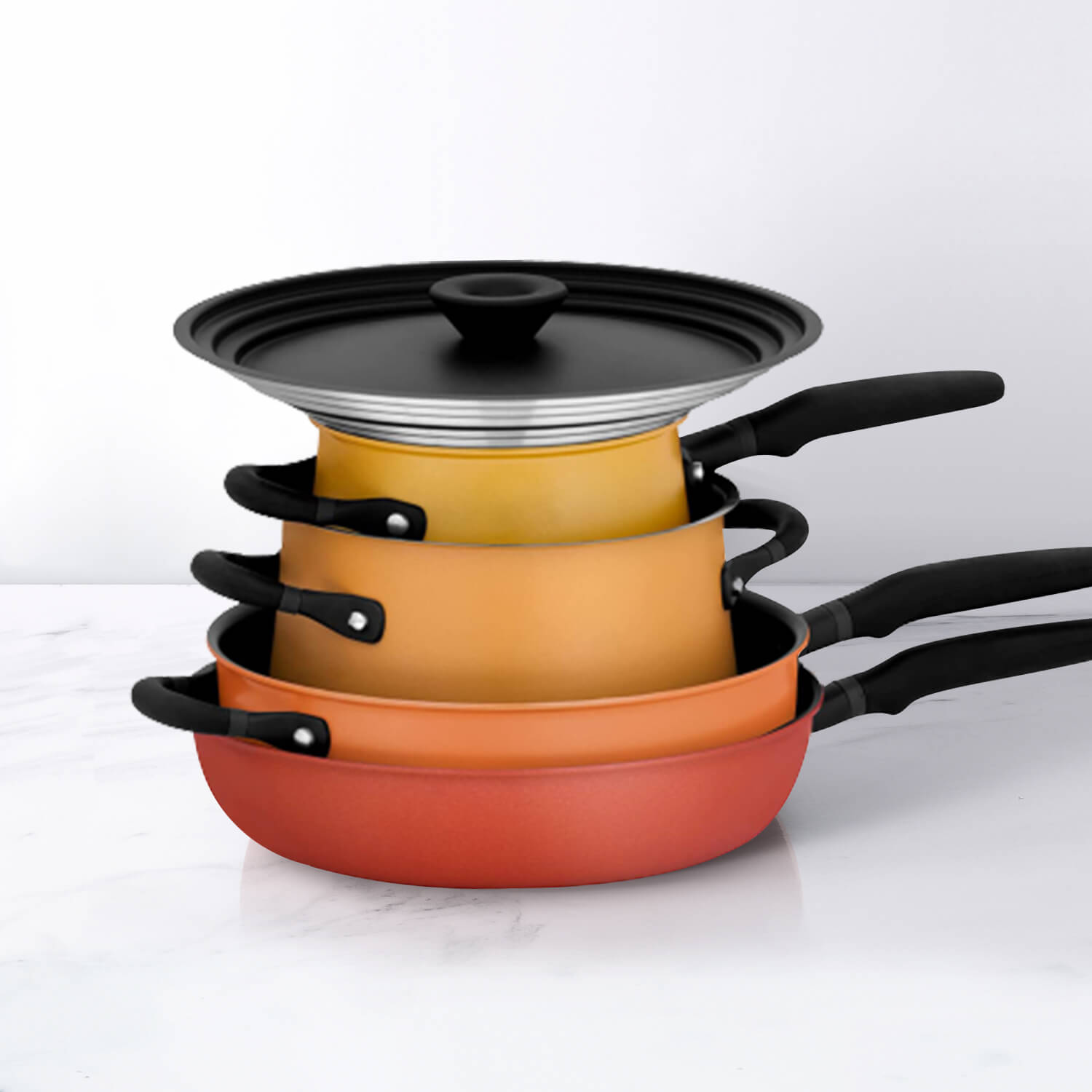
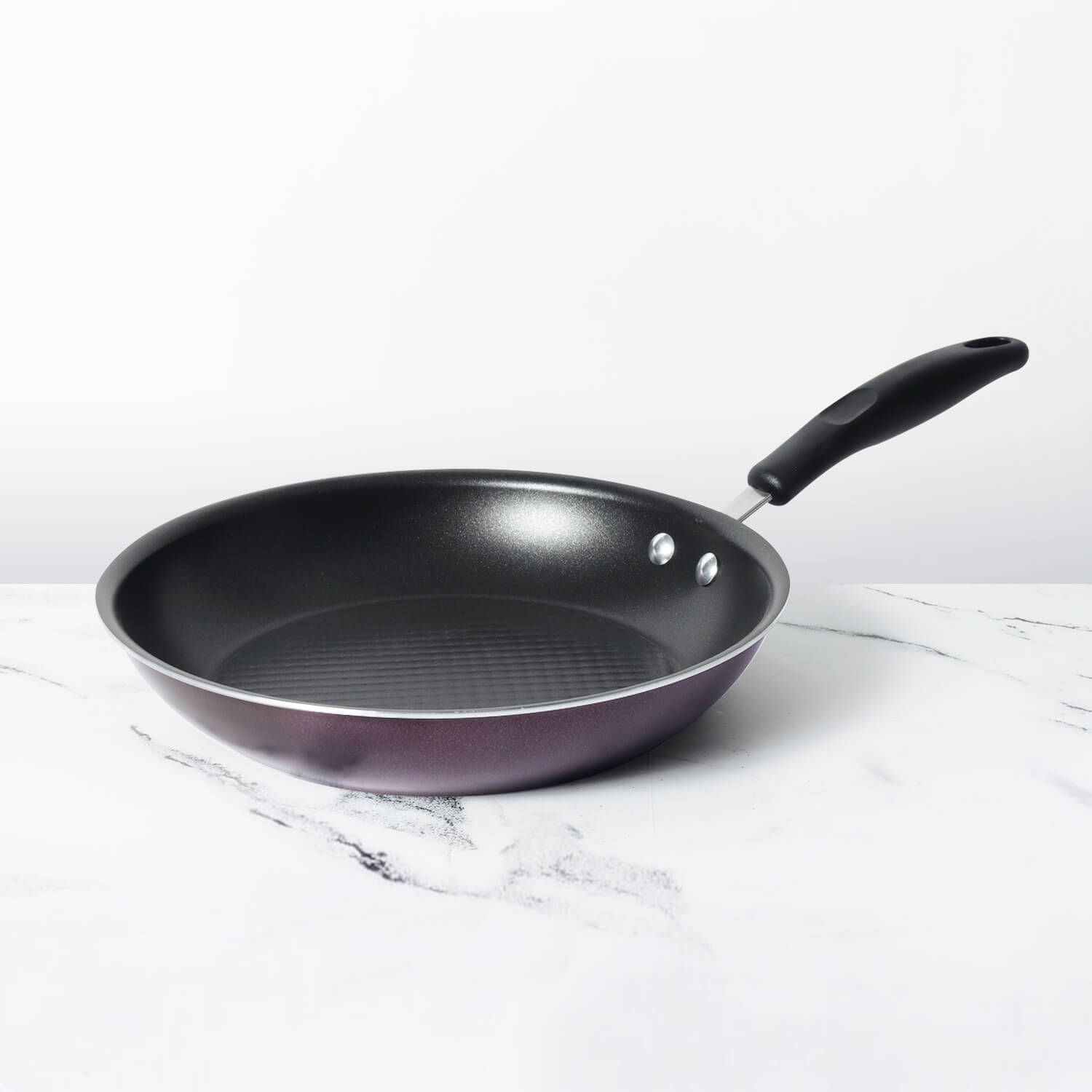




Leave a comment